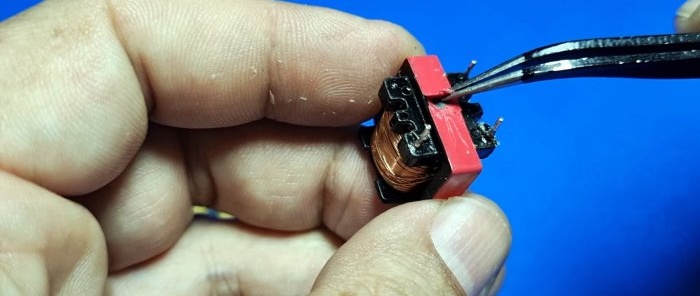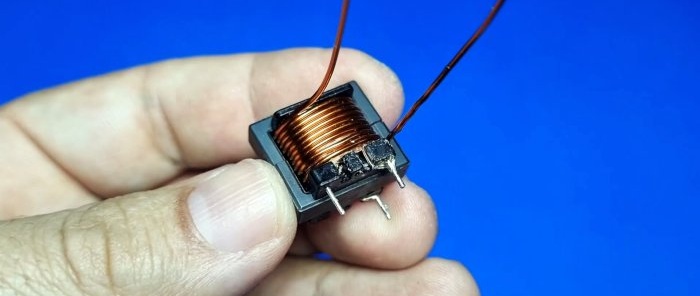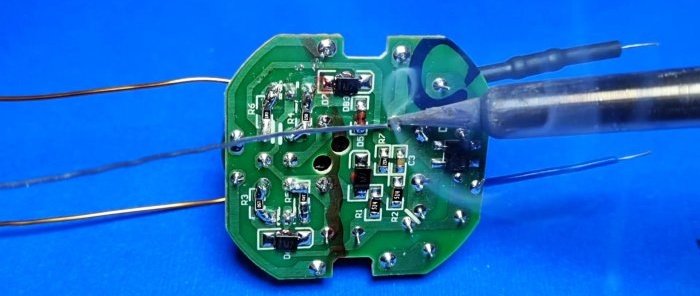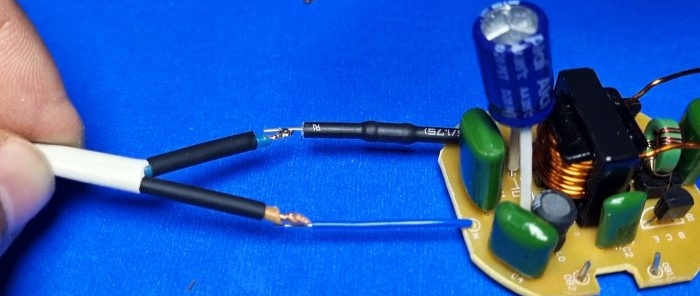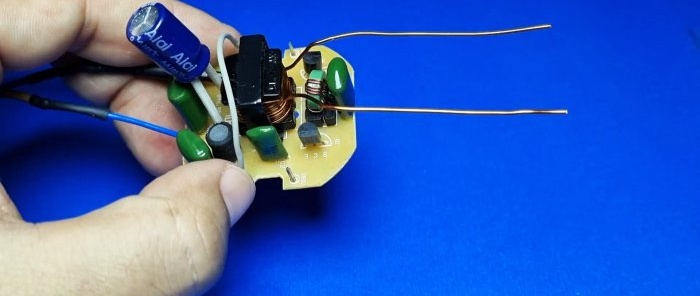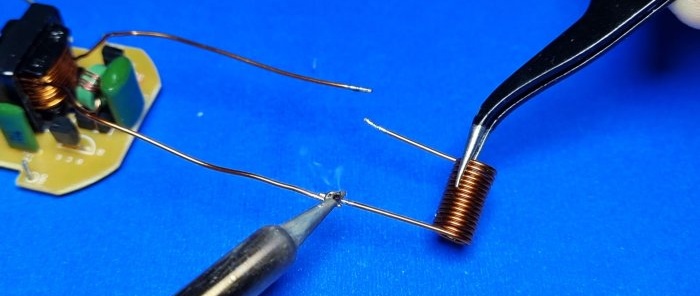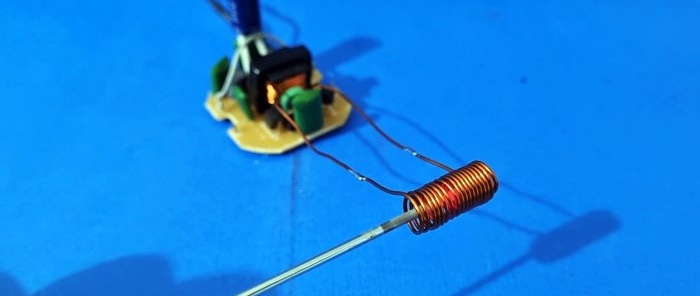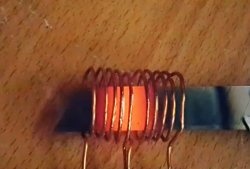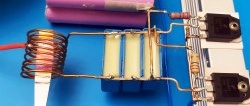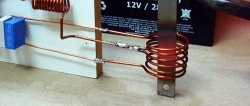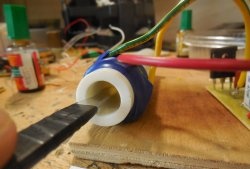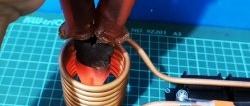An old, broken energy-saving CFL light bulb can still be very useful. For example, for making the most interesting homemade product - an induction heater. And first, as always, a little theory.
Heaters of this type are widely used in various industries. With the help of such devices, metals are melted, hardened or sectorally heated.
The principle of their operation is based on the effect of the appearance of eddy currents - Foucault currents - in a metal core when it is placed in the alternating magnetic field of a coil-circuit. And this is accompanied by the release of heat in the core - electromagnetic energy is converted into thermal energy.
On the site It’s easy to find all kinds of device diagrams to replicate on your own. And the simple, now classic circuit is very similar to the electronic ballast circuit for fluorescent lamps. And we, using a ready-made CFL lamp board and modifying it a little, will create an induction-type heater. Let's begin.
You should not take a lamp with a power of less than 20 W. This model says 23 W. It will do.We must understand that we will not receive an industrial design; its permanent use is not envisaged. This will be a kind of model showing the possibility of independently manufacturing a device that uses induction for heating.
Making a simple induction heater from an energy-saving lamp
We open the lamp base and remove the electronic board from it.
The filament wires are wound on the pins on its sides. Having disconnected them, we put aside the spiral-shaped glass tube - the flask. Disconnect the power wires from the base. One of them has a fuse. That's it, the payment is in your hands.
Now you need to modify the throttle. We desolder it and disconnect the ferrite core.
It can be difficult to separate it; you will have to heat the ferrite. The modification consists of winding an additional winding. Thus, there will no longer be a choke, but a transformer.
For the secondary winding, take a copper wire with a cross section of 0.8 mm. By winding it turn by turn, it is possible to lay 11 turns. It is important to wind tightly and carefully so that the w-shaped core falls into place.
We solder the manufactured transformer back into the board.
Connect the power cord. The pins to which the filaments of the bulb were previously connected should be short-circuited by soldering a piece of wire.
Next, we will make a coil circuit. We will wind 10-15 turns from the same copper wire on a mandrel with a diameter of 6 mm. We solder it to the secondary winding of the transformer we made. All. Now the tests.
A metal pin placed inside the circuit coil heats up red-hot in about five seconds. Of course, long-term operation of the device is undesirable: the transistors get very hot. But the performance of the device has been proven.



